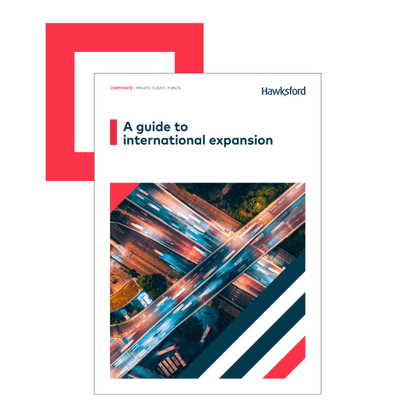The Pacific Alliance-Singapore free trade agreement (PASFTA) officially came into force on 3 May 2025 for Singapore, Chile, and Peru, with Colombia and Mexico to follow upon ratification. This new agreement opens doors to new opportunities for businesses in Singapore.
Linking Singapore with the four Pacific Alliance countries mentioned above, this latest free trade agreement (FTA) is expected to increase market access and create new pathways for trade and investment.
According to Singapore’s Ministry of Trade and Industry (MTI), there are about 100 Singapore companies currently operating across the Pacific Alliance markets. For many Singapore firms yet to venture into Latin America, the PASFTA will strengthen the business case for exploring this region. In this article, we will discuss the unique trade ties between Singapore and Pacific Alliance members, and what businesses can look forward to with the PASFTA.
About the Pacific Alliance
Formally established in 2011, the Pacific Alliance is a Latin American trade bloc comprising Chile, Colombia, Mexico, and Peru. The alliance was founded to promote deeper economic integration among its members, fostering free movement of goods, services, capital, and people.
Combined, these four nations represent the world’s ninth-largest economy, with a total population of about 235 million people. According to the World Bank, the bloc has a combined gross domestic product (GDP) of more than US$2.7 trillion in nominal terms, accounting for about 40% of the total GDP of the Latin America and Caribbean region.
Here’s a look at each Pacific Alliance member and its economic ties and opportunities with Singapore:
1. Chile
As one of Latin America’s most open economies, Chile is known for its rich natural resources and pro-trade policies. It is also the world’s leading producer of copper. As a member of the Comprehensive and Progressive Agreement for Trans-Pacific Partnership (CPTPP), Chile already has strong trade linkages with Singapore. The country is also a signatory to the Digital Economy Partnership Agreement (DEPA) alongside Singapore, New Zealand, and Korea.
The PASFTA builds on this foundation to boost bilateral trade flows and collaboration. The agreement will open doors to sectors such as agri-trade, green energy, and digital, innovation and technology. Some of the products traded with Singapore include electrical components, chemicals, wine, and frozen fish, and the FTA’s tariff reductions may further increase this exchange.
2. Peru
Peru is a resource-rich country with a fast-growing, diversified economy. Key products traded with Singapore include machinery, minerals, agri-produce, and mechanical appliances. Besides the PASFTA, Singapore also maintains free trade agreements with Peru via the CPTPP and a bilateral Peru-Singapore FTA (PeSFTA).
With the PASFTA in force, Singapore businesses can explore the potential of Peru’s market under preferential terms. This will strengthen economic linkages on top of the existing ties. Businesses may also see opportunities in sectors such as agri-trade, infrastructure, and technology solutions.
3. Mexico
Mexico is the largest economy in the Pacific Alliance and a Group of Twenty (G20) nation, offering a substantial market for business expansion. With a population exceeding 130 million people, Mexico is the world’s tenth most populous country and has the twelfth-largest economy globally. This scale brings a wide range of opportunities.
While the PASFTA is not yet in force for Mexico, Singapore companies are already engaged with Mexico under the CPTPP agreement. Electronic circuits, storage devices, data processing machines, and medical instruments are some of the products traded with Singapore. Under the PASFTA, key sectors for collaboration will include oil and gas, logistics, infrastructure, as well as digital, innovation, and technology.
4. Colombia
While Colombia is in the process of ratifying the PASFTA, it’s worth noting that the country is the only Pacific Alliance member with which Singapore did not already have an existing trade deal. PASFTA will thus establish the first free trade link between Singapore and Colombia. Products already traded with Singapore include vehicle parts, electronic integrated circuits, refined petroleum, and precious stones.
As Colombia comes on board, it will reduce or eliminate tariffs on 85.7% of its tariff lines for Singapore trade, lowering trade barriers. Singapore companies can then look forward to a new frontier market with greater confidence and preferential access. Particularly, the PASFTA with Colombia might be of keen interest to businesses involved in agri-trade, infrastructure, as well as digital, innovation, and technology.
How the PASFTA will benefit Singapore companies
For businesses, the PASFTA will usher in a host of benefits in areas such as trade in goods, services and investment, and electronic commerce. It’s worth noting that Singapore’s trade with the Pacific Alliance is already significant. Bilateral trade reached SG$12.5 billion in 2024, which is over one-third of Singapore’s total trade with the Latin American and Caribbean region.
Below is a summary of the key PASFTA features and its benefits for new and existing businesses:
| PASFTA feature | Benefits for existing Singapore businesses | Benefits for new Singapore businesses |
|---|---|---|
| Removal of tariffs on most tariff lines | Reduce the cost of importing goods from or exporting goods to the Pacific Alliance, improving profitability and competitiveness | Lower the initial cost barrier for exporting goods to Pacific Alliance markets, making market entry more financially attractive |
| Greater transparency and more efficient customs processing | Lead to faster clearance of goods, reducing delays and storage costs, and improving supply chain efficiency for ongoing operations | Simplify the import/export process for new traders, reducing administrative burden and the likelihood of unexpected delays or costs |
| Materials sourced from other member countries can contribute towards the good’s originating status to qualify for preferential tariff treatment | Provide flexibility in sourcing materials within the Pacific Alliance or Singapore, making it easier for existing production to qualify for tariff benefits | Simplify compliance with Rules of Origin, making it easier for new businesses to meet the requirements for preferential tariffs on exports |
| Transparent and non-discriminatory rules for technical regulations, with sufficient time given to businesses to meet any new standards | Ensure a predictable regulatory landscape, reducing uncertainty and the cost of adapting existing products or processes to new standards | Provide clarity on technical requirements from the outset, allowing new businesses to design products or services that meet local standards efficiently |
| In committed sectors, Singapore service suppliers and investors will be treated favourably | Ensure a level playing field and fair treatment for existing service providers and investors, protecting their interests and operations | Provide confidence for new service providers and investors that they will not be unfairly disadvantaged compared to domestic entities |
| Not required to have a local representative office in the Pacific Alliance for committed sectors | Offer operational flexibility and potential cost savings by not mandating a physical office presence for certain established service operations | Reduce the initial investment and complexity required to offer services in the Pacific Alliance, facilitating market entry for service providers |
| Not required to appoint individuals of any specific nationality to senior management in committed sectors | Allow businesses to appoint the most qualified personnel to senior roles based on merit and business needs, not nationality requirements | Provide flexibility in staffing key management positions when setting up operations in the region |
| Preferential market access in legal services, construction services, and tax advisory services | Create opportunities for existing service providers in these specific sectors to expand their client base and offerings within the Pacific Alliance | Offer clear opportunities for new service businesses in these areas to enter and compete in the Pacific Alliance markets |
| Companies can bid for Pacific Alliance’s government procurement projects | Open a new stream of potential business, particularly significant for established companies in the infrastructure sector | Provide a valuable avenue for new businesses to secure contracts and gain a foothold in the Pacific Alliance market |
| Zero customs duties on electronic transmission | Support existing digital operations and the flow of data and digital products without additional cost burdens | Encourage new digital businesses to offer services and products in the Pacific Alliance markets without facing customs duties on transmissions |
| Companies selling products with embedded software are not required to release their source code | Protect the intellectual property and business models of existing technology companies operating in the region | Provide assurance to new technology businesses that their proprietary code is protected when selling products in the Pacific Alliance |
| Cooperation in maritime activities with the removal of barriers to the supply of maritime transport services | Improve the efficiency and potentially reduces the cost of shipping goods, benefitting businesses involved in import and export | Facilitate the physical movement of goods for new traders, making the logistics of entering the market more manageable |
Reinforcing Singapore as an open economy for businesses
As a small country with a highly globalised economy, Singapore has always depended on international trade for growth. Over the years, it has forged an extensive network of bilateral and regional trade agreements around the world.
With the addition of the Pacific Alliance agreement, Singapore is now party to 28 FTAs in total. These collectively cover the Association of Southeast Asian Nations (ASEAN), Asia-Pacific, Europe, and beyond. The outward-looking approach demonstrates the country’s fundamental belief in the benefits of open markets and rules-based trade.
In pursuing deals like PASFTA, Singapore diversifies its trade relationships and reinforces its reputation as one of the most open economies in the world. This consistency also means that businesses already operating in Singapore can plan long-term, knowing the government continues to seek new opportunities for trade facilitation and liberalisation.
At the same time, this cements the country’s role as an international business hub, attracting multinational companies to base themselves in Singapore and leverage it as a gateway into ASEAN and other regional markets. Whether it’s lower tariffs, smoother investment in foreign markets, or better protections overseas, businesses will have a competitive edge expanding from Singapore.
Next steps
Just as important, support is readily available to help businesses take full advantage of these opportunities. If you’re considering setting up in Singapore or any of the Pacific Alliance markets, Hawksford can help your business with the practical aspects of incorporation.
With offices in Singapore and other key business locations, we can guide you through local regulations and set up the appropriate business entities. Reach out to our team to learn more about how we can assist with your business’ expansion efforts.

Speak to our experts today
Explore how your business can tap into new markets under the Pacific Alliance-Singapore FTA
Updated on



